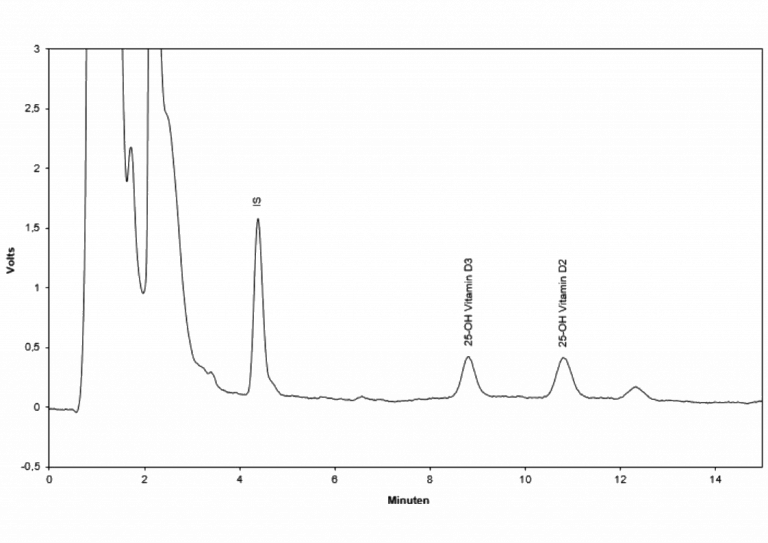25-OH Vitamin D2/D3
Vitamin D is one of the most important essential bioregulators of the Ca2+- and phosphate metabolism in higher animals. Together with the peptide hormones parathormon and calcitonin it is responsible to obtain the Ca2+- and phosphate homoeostasis.
The most important physiological functions of vitamin D is the stimulation of the intestinal resorption of Ca2+ and phosphate and their incorporation in the bone matrix.
D-vitamins or calciferols arise from provitamins by the UV radiation of sunlight catalysed splitting of the B-ring of the steran backbone. In the skin formed vitamin D3 is bound to a vitamin D binding-protein in the plasma, transported into the liver and hydroxylated in position 25 to form 25‑OH vitamin D3. Another hydroxylation is performed in the kidney to yield 1,25 (OH)2 vitamin D3 and 24,25 (OH)2 vitamin D3. It is proofed that 1,25 (OH)2 vitamin D3 is the metabolic most active form of vitamin D. Nevertheless, more than 95% of 25‑OH vitamin D is 25‑OH vitamin D3.
A lack of vitamin D leads in growing humans and animals to rachitis, hypocalcaemia and secondary hyperparathyreoidism, in adults to osteomalazia.
Technical data
Sample Serum, plasma
Sample volume 250 µl
Detector UV 264 nm
Method isocratic
Determinations 100
Ordering Information
IC3401 Testkit
IC3401ko Controls (2 level each 250 µl lyoph.)
IC3401rp HPLC column

Principle of the method
For the determination of 25-OH vitamin D3 a sample preparation has to be performed. Therefore a precipitation step is combined with an extraction. After centrifugation the upper layer is injected into the HPLC system.
The HPLC separation works with an isocratic method at 30 °C with a “reversed phase” column. Chromatograms are detected by an UV-detector. The separation takes 15-25 minutes for each run depending on the column used. Results are quantified by the delivered serum calibrator and calculated by the “internal standard-method” by integration of the peak areas or heights.